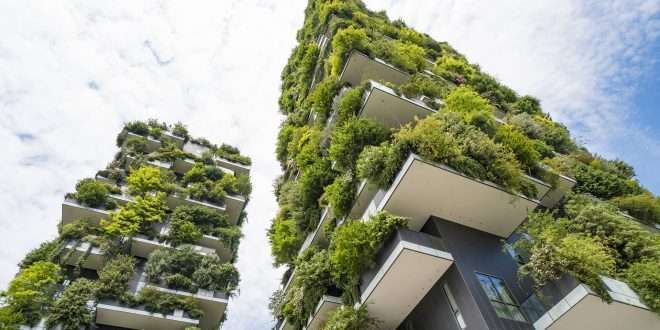In today’s digital age, web design trends are constantly evolving. As technology progresses, so does our responsibility to protect the environment. In this blog, we delve into the world of eco-friendly web design, exploring the latest sustainable practices that pave the way for a greener and more sustainable online presence. As we shape the future of the internet, let’s discover how to create websites that not only impress but also promote a healthier planet.
The Green Web Design Revolution
Web Design Trends, web design, latest web design, latest design website In the midst of climate change and growing environmental awareness, the web design industry is undergoing a green revolution. Companies are acknowledging their ecological impact and seeking more sustainable solutions. From eco-conscious brands to environmentally responsible consumers, the demand for green websites is rising. Designers and developers are embracing this shift, adopting practices that promote sustainability and lower carbon footprints.
Minimizing Energy Consumption
One of the primary goals of eco-friendly web design is to reduce energy consumption. High-resolution images, complex animations, and excessive use of plugins can strain server resources and lead to higher energy consumption. By optimizing images and using efficient code, we can create websites that load faster and consume less power. Embracing minimalism in design not only improves website performance but also enhances the user experience.
Responsive Web Design for a Greener Tomorrow
Responsiveness is not just about adapting to various devices; it also impacts sustainability. A responsive web design eliminates the need to create separate websites for different devices, reducing development and maintenance efforts. By employing responsive design principles, we create websites that cater to all users, while also reducing electronic waste associated with outdated devices.
Sustainable Hosting and Green Servers
When it comes to hosting, not all servers are equal in terms of sustainability. Choosing a green hosting provider that relies on renewable energy sources can significantly reduce the environmental impact of your website. Green servers use clean energy, such as wind or solar power, to keep your website running efficiently while minimizing the carbon footprint.
Optimizing Website Performance
A slow-loading website not only frustrates users but also wastes energy. Website optimization is crucial for sustainability. Compressing files, leveraging browser caching, and using content delivery networks (CDNs) are essential steps to enhance website performance. These measures improve loading times, lower bounce rates, and contribute to a greener internet.
Sustainable Color Palettes and Design Elements
Web designers can make a difference by choosing eco-friendly color palettes and design elements. Opt for colors that complement your brand while using fewer resources to display. Additionally, consider using vector graphics instead of raster images whenever possible. By using design elements efficiently, we create websites that conserve bandwidth and reduce data consumption.
Carbon Offsetting for Websites
Incorporating carbon offsetting strategies into web design is a growing trend. Many businesses are taking accountability for their carbon emissions by investing in carbon offset projects. Integrating carbon offset calculators on websites allows visitors to see the positive environmental impact they can make. This creates an opportunity to engage users in sustainability efforts.
Eco-Friendly Typography and Readability
Font styles can influence the energy required to display text on screens. Opting for web-safe fonts that require less processing power can make a significant difference. Additionally, increasing readability through appropriate font sizes and line spacing reduces strain on users’ eyes, creating a more user-friendly and sustainable experience.
Sustainable E-commerce Practices
Sustainability extends beyond design; it also applies to e-commerce practices. Encouraging customers to choose eco-friendly packaging options, promoting ethical product sourcing, and integrating green shipping methods contribute to a more sustainable online shopping experience. By incorporating sustainability into e-commerce websites, businesses can inspire positive change in consumer behavior.
Raising Awareness through Eco-Friendly Web Design
Beyond individual efforts, web designers have the power to raise awareness about environmental issues. Through captivating visual storytelling and engaging content, websites can become platforms for environmental education and advocacy. By fostering a sense of responsibility for the planet, web designers can drive change and inspire others to adopt sustainable practices.
Final words
As web designers, we hold the key to creating a greener and more sustainable digital future. Embracing eco-friendly web design trends allows us to reduce energy consumption, lower carbon footprints, and inspire positive change in the online world. By combining creativity and environmental consciousness, we shape websites that not only outrank others in search engines but also contribute to a healthier planet.
Frequently Asked Questions
Q1. How does eco-friendly web design impact website performance?
Eco-friendly web design optimizes websites for faster loading times, reducing bounce rates, and improving overall user experience. By minimizing energy consumption and employing efficient code, sustainable websites not only perform better but also contribute to a greener internet.
Q2. What is the role of sustainable hosting in web design?
Sustainable hosting providers use renewable energy sources like wind or solar power to run their servers, reducing the environmental impact of websites. Choosing a green hosting option aligns with eco-friendly web design principles and supports the transition to a more sustainable online ecosystem.
Q3. How can web designers incorporate carbon offsetting into websites?
Web designers can integrate carbon offset calculators on websites, allowing users to understand and offset their carbon emissions. By promoting carbon offset projects, businesses can engage visitors in sustainability efforts and encourage them to take responsibility for their environmental impact.
Q4. What are some sustainable e-commerce practices for web design?
Sustainable e-commerce practices include offering eco-friendly packaging options, promoting ethical product sourcing, and integrating green shipping methods. By incorporating sustainability into e-commerce websites, businesses can foster environmentally responsible consumer behavior.
Q5. How can web designers use their platforms to raise environmental awareness?
Web designers can use captivating visual storytelling and engaging content to raise awareness about environmental issues. By creating informative and inspiring websites, designers can advocate for a greener future and encourage positive change in society.
 webfily
webfily



